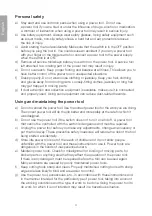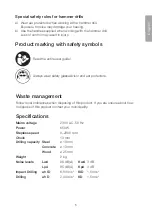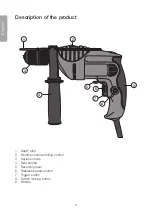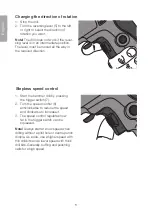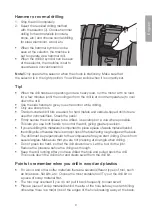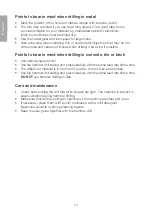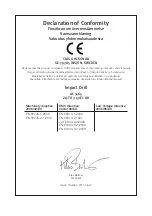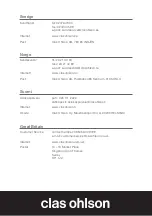
9
English
Hammer or normal drilling
1. Stop the drill completely.
2. Select the required drilling method
with the selector (2). Choose hammer
drilling for hard materials (concrete,
stone, etc.) and choose normal drilling
for steel, aluminium, wood, etc.
• When the hammer symbol can be
seen at the selector, the machine is
set to operate as a hammer drill.
• When the drill bit symbol can be seen
at the selector, the machine is set to
operate as a conventional drill.
Note!
Only operate the selector when the chuck is stationary. Make sure that
the selector is in the right position. You will hear a click when it is correctly set.
Tip!
• When the drill has been operating under a heavy load, run the motor with no load
for a few minutes (until the cooling air from the drill is at room temperature) to cool
down the drill.
• Use the side handle to give you extra control while drilling.
• Only use sharp tools.
• Titanium-coated drill bits are used for hard metals and carbide-tipped drill bits are
used for concrete/tiles. Check the pack!
• Firmly secure the workpiece to be drilled. Use clamps or a vice where possible.
This lets you use both hands to control the drill, giving greater precision.
• If you are drilling thin materials it is important to place a piece of waste material behind
the drilling site, otherwise there is a major risk of the hole having rough edges at the back.
• The drill must be perpendicular to the workpiece before you start drilling. Check from
several angles. Make sure that you are not pressing at an angle when drilling.
• Do not press too hard, so that the drill slows down. Let the tool do the job!
Reduce the pressure before the drill goes through.
• Keep the drill running after you have drilled the hole and pulled back the drill.
This cools down the drill motor and clears swarf from the drill bit.
Points to remember when you drill in wood and plastics
• For wood and other softer materials there are several different types of tool, such
as hole saws, flat bits, etc. Choose the most suitable tool! Try out the drill bit on
a piece of scrap material first.
• The tool may overheat if you do not pull it back frequently to clear swarf.
• Place a piece of scrap material behind the site of the hole before you start drilling,
otherwise there is a major risk of the edges of the hole breaking away at the back.
Содержание Z1J-TD3-13-UK
Страница 1: ...E ngl i sh 650 W Hammer drill Art no Model 18 3465 Z1J TD3 13 E UK Ver 201302...
Страница 2: ...2...




